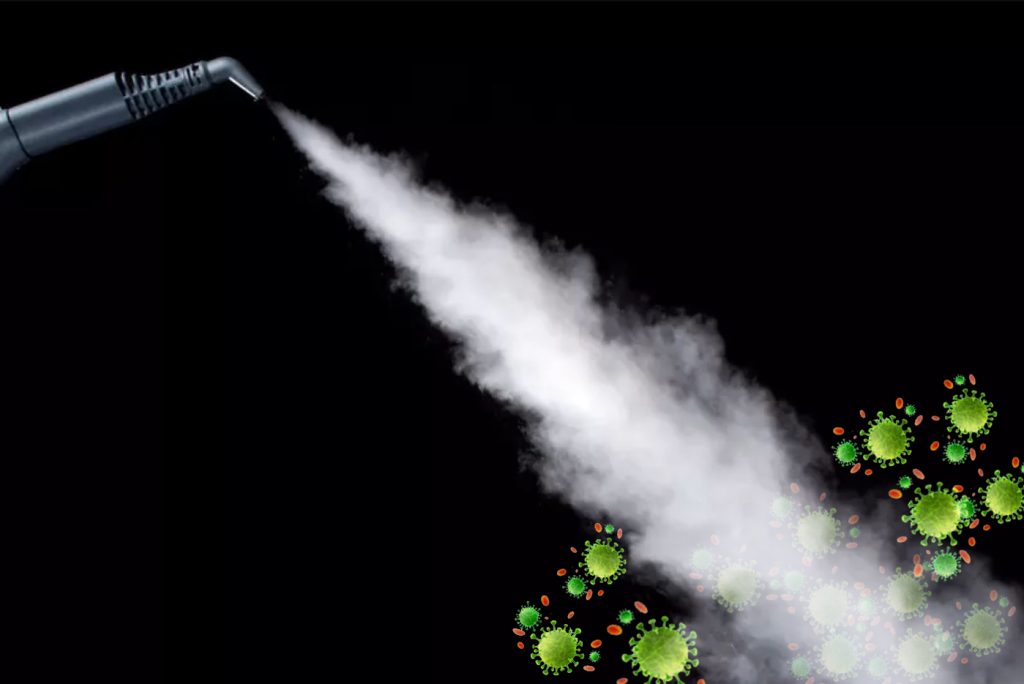Steam Cleaning: Does it Kill Bacteria and Viruses?
by Ian Martinez
Steam cleaning has been a popular cleaning method for years, and for good reason, it is really effective. Most bacteria die at around 150ºF-180ºF, and considering steam is 212ºF, you are well over the heat threshold. So steam cleaning an interior would be a perfect way to kill bacteria right? Technically yes, but only if it is done the right way.
You ever see the video of people steam cleaning vents or the steering wheel? Many detail shops offer “disinfecting services” especially lately with COVID-19. They use steam and “kill” all of the bacteria and viruses that could be on your interior surfaces. And while yes these viruses and bacteria die around 150ºF-180ºF, it only works with a key detail, time.
You see just spraying steam on a surface for a few seconds does little to nothing against actually killing the bacteria. To get to the 99.9% disinfectant number you need to be at that temperature for:
3 MINUTES
That’s how long it takes to cook instant ramen, or to microwave 2 hot pockets or longer than it would take you to perform My Girl by the Temptations even if you started over because you didn’t hit that first note right. The point is that’s a long time, and a lot longer than most people are doing it for.
Think about it like washing your hands. You can use hot water and soap, but f you only wash for 5 seconds compared to the recommended 20 seconds you are not giving the soap enough item to effectively kill the germs, and thus not doing the job. So when you put your steam nozzle into the vents to “sterilize” the vent system not only are many people not doing it for long enough, the entire vent system will not reach 212ºF. The point at which you are steaming will, but the heat is very centralized. think about when you are spraying the steam, you can hold your hand inches away and feel nothing.
Then we have the steering wheel, which is another common “service”. Again it comes down to time and how much surface is actually reaching the correct temperature. You also then run into the issue of the surface temperament, meaning if you have a delicate dyed leather or Alcantara, how many times can you expose it to 212ºF heat for 3 minutes at a time before it begins to fade or crack?
So when you are steam cleaning an interior, most likely you are not sanitizing it. However, that does not mean steam is not an effective cleaning tool. Paired with the right cleaner, such as Gtechniq I2 Tri-Clean or P&S Express Interior Cleaner , or even Meguiar’s D101 diluted, you can really help loosen up that contamination and open up the pores of the material to allow your cleaner to penetrate and get to all of that bacteria.
Please note, this isn’t “technically” classified as sanitizing by EPA terms, but you are bringing up most of the bacteria when you are cleaning so you are making it a much safer and cleaner environment. To actually sanitize chemically you would need to use a product that states it sanitizes and follow the directions for how long to leave the product before removing it. Just be careful and do a test spot as many can be harsh or dyed leather or interior plastics.








“Dwell time”
There have been more and more videos popping up about it and I’m happy to see y’all put up an article for folks to reference, both now and in the future.
And reading the manufacturer’s instructions to make sure you are using the product correctly! What a concept right?
Of course! Lol! Many of the popular cleaning products out there do put instructions on their labels to achieve best results. Steam cooks germs, while solvents chemically kill them.
Either way, one would do well to make sure those surfaces can withstand the chosen treatment method on an inconspicuous spot in the car and out of direct sunlight before moving onto the rest of the project. The best thing I can offer for sanitation is ozone treatment, with an extended “marinade” period after the machine stops. Even with that, the jury is still out on exactly how effective it is against viruses. Once I find more peer-reviewed articles, I’ll feel more comfortable speaking on that feature.
Thanks for the response, Ian.
Excellent article and good information to the consumers. I am worried too many people are capitalizing on the virus for profit with this type of cleaning when they don’t really know what they are doing. Nice work!
Thanks Ben! Ive seen a lot of people advertising this kind of services and it’s sad. That’s why I wanted to try and clear up some information and help people know the correct way to do things.
Great Write. We’re actually doing steam and triclean/essential oil medley for free in our area to hopefully help the curve a bit.
Thanks.
That’s a great gesture! Many people marking up the “service” of sanitizing. Almost worse than price gouging in my option because your not even giving the customer what your selling you know?
Death by Karma. Lol
I don’t think it’s bad to have it be for sale obviously, it’s a quality service that takes time. But not by scare tactics or false promises. That’s why we were like fuck it… Let’s just try and help flatten the curve a little and put out some good juju out there.
Yeah exactly, it’s the false sale that’s the issue
Great article
Do you think you can write one up regards ozone machine treatments ?
Janis,
That is a good idea and may be something we tackle. They are not as widely used due to the cost but we have been seeing it pop up more and more. According to the EPA, ozone levels would need to be 5-10 times higher than public heath standard deem safe in order to decontaminate, and even then wouldn’t penetrate porous surfaces like leather.
Ian, Thank you very much for the write-up along with Great KEY information !
It is important to keep the facts straight about how steam works to clean & disinfect surfaces.
Does anyone know how much dwell time would be needed for 350Fdegree Dry vapor steam@ 10bars?
Or where one could find this information.
Thx in Advance
Brent,
Unfortunately I have not been able to find a chart showing the different temps in relation to the time. Just that at 212 it takes 3 minutes.
This is great info of which more people should be aware. Our detailing business is based around steam (we don’t use any power or pressure washers) and we’re up-front about the fact that our methods do not sanitize your vehicle. For something approaching sanitizing, all we can really offer is a disinfecting fog with hypochlorous acid in addition to an interior detail — it works and is safe on upholstery.
I see too many detailing businesses promoting their steamer or steam cleaning services as a means of killing bacteria and viruses, especially since the beginning of the pandemic. I’m willing to bet most do it out of ignorance, but I’m sure some of them know better. Hopefully this article helps to educate businesses as well as consumers.